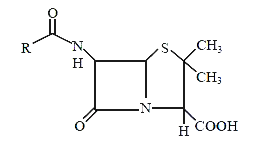Given below are two statements :
Statement I: 2-methylbutane on oxidation with KMnO4 gives 2-methylbutan-2-ol.
Statement II: n-alkanes can be easily oxidised to corresponding alcohols with KMnO4.
Choose the correct option:
Both statement I and statement Il are incorrect
Statement is incorrect but statement II is correct
Statement I is correct but statement II is incorrect
Both statement I and statement II are correct
To solve the problem, we need to analyze both statements given:
Statement I: 2-methylbutane on oxidation with KMnO4 gives 2-methylbutan-2-ol.
Statement II: n-alkanes can be easily oxidized to corresponding alcohols with KMnO4.
1. Understanding 2-Methylbutane:
- The structure of 2-methylbutane is CH3-CH(CH3)-CH2-CH3.
- It has a branched structure with a methyl group on the second carbon.
2. Oxidation with KMnO4:
- KMnO4 is a strong oxidizing agent.
- In the case of 2-methylbutane, the oxidation typically leads to the formation of alcohols.
- However, the oxidation of 2-methylbutane will not yield 2-methylbutan-2-ol directly, as it does not have a tertiary hydrogen that can be oxidized to form a tertiary alcohol.
3. Analyzing Statement I:
- The statement claims that 2-methylbutane gives 2-methylbutan-2-ol upon oxidation.
- Since 2-methylbutane does not have a tertiary hydrogen, this statement is incorrect.
4. Understanding n-Alkanes:
- n-Alkanes (like n-butane, n-pentane, etc.) are saturated hydrocarbons.
- They can be oxidized, but KMnO4 typically does not oxidize n-alkanes to alcohols easily.
- For effective oxidation to occur, the presence of primary or secondary hydrogens is necessary, and KMnO4 is not effective in oxidizing n-alkanes to alcohols.
5. Analyzing Statement II:
- The statement claims that n-alkanes can be easily oxidized to corresponding alcohols with KMnO4.
- This statement is also incorrect.
Conclusion:
- Both statements are incorrect.
- Therefore, the correct option is that both statements are false.
Final Answer:
Both Statement I and Statement II are incorrect.
---
- The structure of 2-methylbutane is CH3-CH(CH3)-CH2-CH3.
- It has a branched structure with a methyl group on the second carbon.
- KMnO4 is a strong oxidizing agent.
- In the case of 2-methylbutane, the oxidation typically leads to the formation of alcohols.
- However, the oxidation of 2-methylbutane will not yield 2-methylbutan-2-ol directly, as it does not have a tertiary hydrogen that can be oxidized to form a tertiary alcohol.
- The statement claims that 2-methylbutane gives 2-methylbutan-2-ol upon oxidation.
- Since 2-methylbutane does not have a tertiary hydrogen, this statement is incorrect.
- n-Alkanes (like n-butane, n-pentane, etc.) are saturated hydrocarbons.
- They can be oxidized, but KMnO4 typically does not oxidize n-alkanes to alcohols easily.
- For effective oxidation to occur, the presence of primary or secondary hydrogens is necessary, and KMnO4 is not effective in oxidizing n-alkanes to alcohols.
- The statement claims that n-alkanes can be easily oxidized to corresponding alcohols with KMnO4.
- This statement is also incorrect.
- Both statements are incorrect.
- Therefore, the correct option is that both statements are false.
Both Statement I and Statement II are incorrect.
Similar Questions
S1: 2-methylbutane on oxidation with KMnO4 gives 2-methylbutan-2-ol
S2: n-alkanes on oxidation with KMnO4 gives alcohol
View SolutionGiven below are two statements :
Statement I : Pencillin is a bacterioustatic type antibiotic.
Statement II: The general structure of Pencillini is :

Choose the correct option:
View Solution
Knowledge Check
2-methyl propane on oxidation with KMnO4 gives
A2-methyl propane-2-olB2-methyl propan-1-olCbutaneDbutanol-12-Phenyl butane on oxidation by KOH+KMnO4
givesABenzoic acidB1-phenyl ethanoic acidC2-methyl butanoic acidD3-methyl butanoic acidWhich of the following alkane can be easily oxidized to alcohol by KMnO4?
ACH4BCH3−CH3CCH3−CH2∣CH3DCH3−CH∣CH3−CH3
The compound Me3C−NH2 on oxidation with acidic KMnO4 gives:
View SolutionChoose the correct statement about KMnO4.
View SolutionAssertion:Isobutane on oxidation with KMnO4 gives tert-butyl alcohol.
Reason:Oxidising agents have no effect on alkanes
View SolutionStatement 1: CeO2 is used for oxidation of aldehyde and ketone
statement 2: Aqueous solution of Cuso4 acts as strong reducing agent.
View SolutionOn oxidation with KMnO4 in acidic medium , SO2 is oxidised to
View Solution
